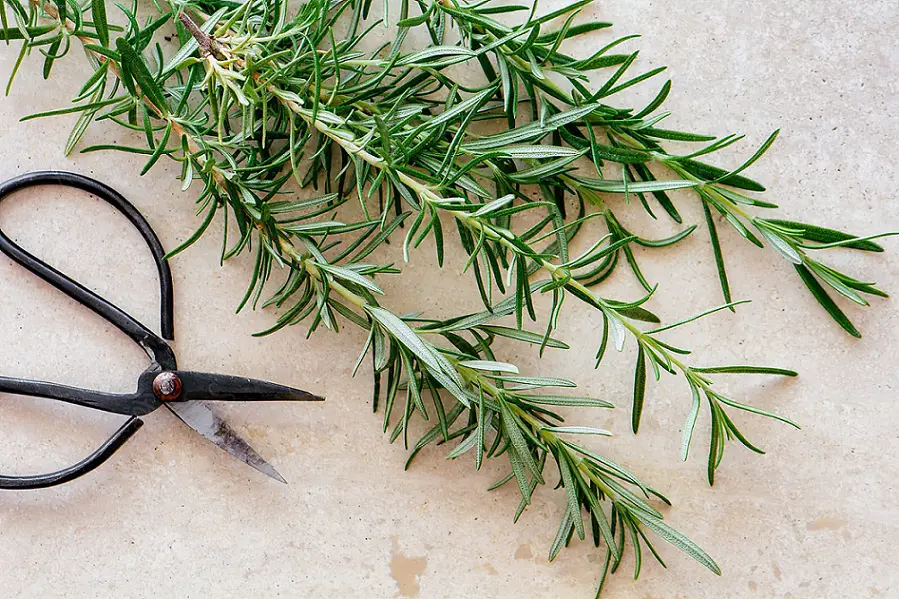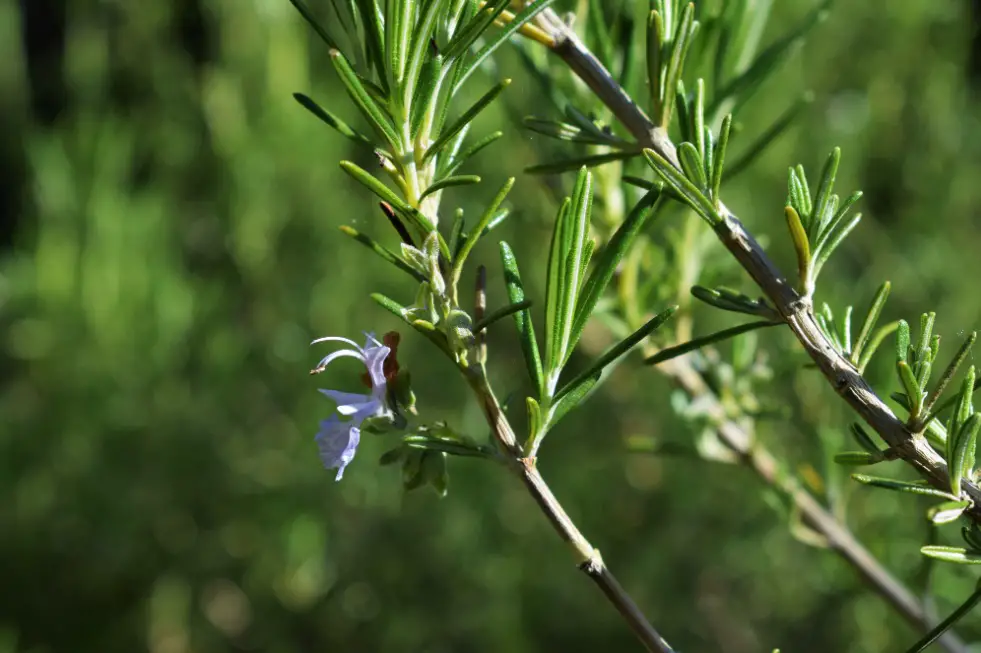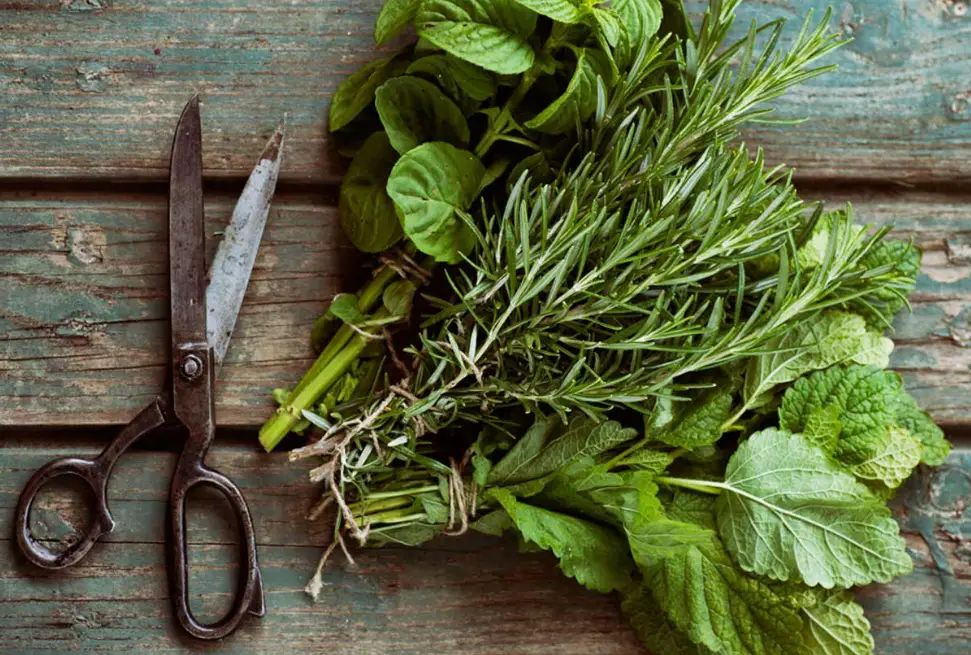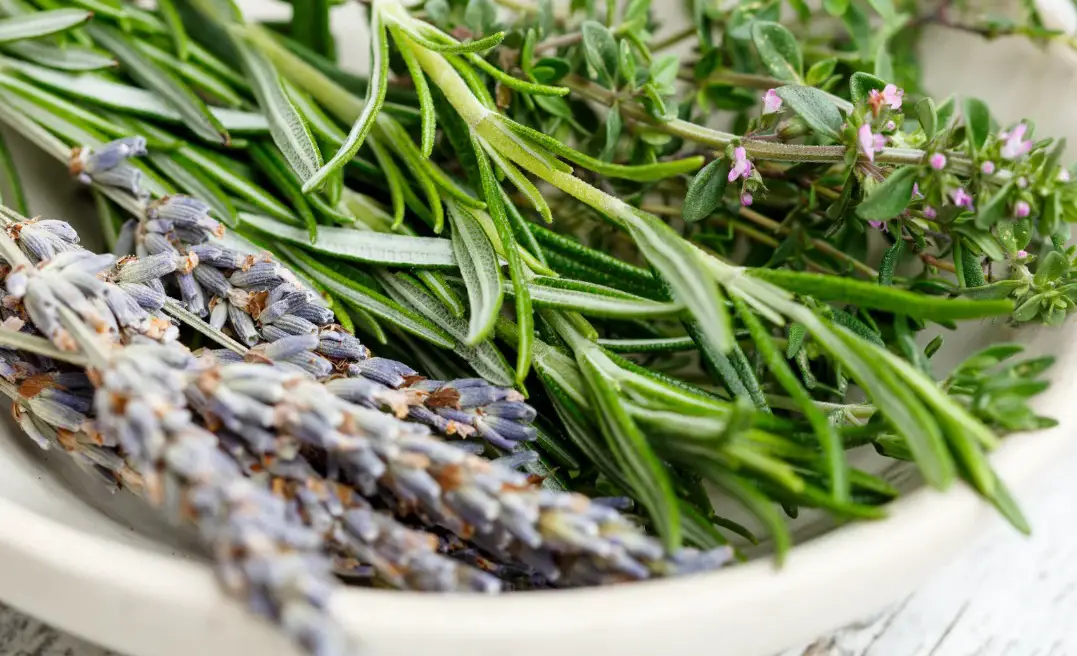Rosemary is an unfastidious and easy-to-shape plant that can grow in different conditions and doesn’t need extraordinary care. Whether you are looking for a yard decoration, a beautiful hedge, or a topiary in the pot, give your attention to a rosemary plant.
Rosemary is presented in a great variety of types: from creeping plants for your Alpine rock garden to big bushes up to 5 ft high that can be shaped into all possible forms. It is represented in a range of colors from white and pink to the magic Tuscan blue.

Contents
Why pruning your rosemary is beneficial
Like any other plant, rosemary requires some maintenance, though not too much. Unlike watering and composting, pruning does not correspond to an essential part of care. But there are some reasons to prune rosemary.
First of all, pruning rosemary is vital to support its health and lifespan. Removing damaged or ill branches allows the plant to avoid spreading disease and fungus and save vitality for new growth.
Trimming crossed or twisted woody stems will improve the airflow needed to keep away from powdery mildew and other diseases.

Regularly cleaning your rosemary bush from dead wood is mostly due to esthetical reasons. It will help the plant look pleasing and refined.
The unattended rosemary becomes woody and unkempt. It is sometimes easier to bed new plants than trim up such an unmanaged bush. Therefore, regular pruning rosemary will help to prolong its life and save budget.
Shaped bushes help to make the orchard nice and cozy, look good to the eye, and add some personal touch.

Best time for pruning rosemary
A light prune is best to be done in early spring, just before the growing season. Pruning rosemary will promote growth of the plant and encourage harvest. Afterward, you can prune rosemary in early summer and every few weeks to cut spent flowers and longer stems and keep it shaped. Pruning up to 8-9 in of the new growth is perfect.
A heavy prune takes place once a year, depending on your geographical location. Normally, you prune rosemary after the season of bloom, often in fall, but well before winter (1 -1,5 months before the frost) so that pruning rosemary won’t hurt the vulnerable new growth and trimmed branches of the plant.

Image source: pinterest.com
A few friendly tips
Prune rosemary with a clean, sharp tool to provide the best result and avoid setting bacteria onto the plant.
An electric saw or lopper is good for woody stems and thicker branches. For fresh green parts, you can easily use garden sheers or clippers.
Pruning is recommended to be done at a slight angle to prevent water accumulation.
When pruning rosemary, don’t trim more than a third of the plant, as it may result in a long period of recovery or even death.
If you need to trim more than one-third of a plant, divide the procedure into several stages, with a couple of months in between. That is sufficient for a rosemary plant to recover.
While pruning woody branches, let some young stems and green leaves left. They are enough to promote growth and boost new leaves and stems. Otherwise, you will get a barren, unproductive stub.

If you have young plants without woody branches, you can start shaping your bush by pinching the longest stems. This way you will get more side branches and encourage new growth. As soon as your plant reaches 11.5 in or more, you can prune rosemary, shaping it as per your taste.
You can get rosemary from seeds, which is quite a long-term process, propagate by putting freshly cut shoots into water or soil, or buy a ready grower from a nursery.
Rosemary is native to a hot, dry climate. Mind, not overwater the plant as it may cause root rot. In a colder climate, you may need to take it home for the winter, so a pot will be a good decision for the case.

Did you know?
Rosemary is very popular in Italy and the south of France. It is a part of many herbal blends for meat, fish, and vegetables. Asian countries don’t use rosemary that much in their cuisine.
Ideas of shapes for rosemary plants
The most common shapes for a rosemary bush are spheric and conic. These are the easiest to sculpt and can be performed with just a sharp pair of scissors or pruning shears. A cone or sphere can be big or small, depending on the size of your plant, sit on the ground or stand on a woody foot.
How to shape rosemary in other way? For a more interesting design, you can make a few layers of cones or spheres or alternate between the two.
Another simple decision is a cube. Cubic rosemary bushes and hedges look neat and claim little effort.

A more complicated form is a spiral. It is more suitable for tall and bushy growth. It’s quite tricky and may be a challenge for an inexperienced gardener. But with some practice, pruning shears, and a piece of string, you can create a real gem for the yard.
A heart shape is also popular for shaping plants. You may choose between a solid full-formed heart and a hollow heart frame. The latter will need a metal mesh for support.
Actually, you can use a metal mesh for any form. It makes the task much easier, just put it on the top of your plant and cut the stems and branches that stand out. With a mesh, you can create more difficult geometrical and animal shapes: dolphins, bears, birds, flowers, or any other things to your liking and fantasy!

Advantages and uses of a rosemary plant
When pruning rosemary, don’t waste the tips, as they can be well-used.
A rosemary plant will attract beneficial insects like bees and butterflies to your garden and repel flies, mosquitoes, and cabbage moths.
Rosemary filters the air, refreshes it, and emits essential oils.
The tough, thick branches make rosemary a natural wind barrier.
Everyone knows rosemary belongs to culinary herbs. With its peculiar flavor and taste, it matches perfectly meat and vegetables and can be added to cheese, soup, dressing, tea, and much more. Among numerous sorts of rosemary, “Spice Islands” and “Barbeque” are picked as the best cultivars for cooking.
Rosemary is a fantastic additive for cleaning products thanks to its antibacterial properties and pleasing fragrance.
Rosemary tips and brunches are great for a Christmas wreath and other craftwork.
Rosemary’s value is not only in its spicy taste, it also offers health benefits. It is known to support brain cells, facilitate digestion, boost focus, decrease blood sugar, have anti-inflammatory and antimicrobial effects, and serve as an antioxidant.

Did you know?
The word “rosemary” or Rose of Mary originates from the Virgin Mary’s name. There are Christian legends associated with this plant.
A matter of history
The ancient thought rosemary improved memory. It makes a symbol of remembrance and true-heartedness in folklore.
In the Dark Ages, rosemary was used by tomb raiders as protection from the black plaque. It was a part of the so-called “thieves’ oil”.
Conclusion
Rosemary is worth your attention if looking for a beautiful, easy-to-care, and easy-to-shape plant. With all its benefits, the plant doesn’t need much maintenance. Prune rosemary regularly and it will grow, harvest and reward your eye.
Pruning rosemary may be a creative process. Think of any unusual design when shaping bushes or hedges, match a great companion plant, and make your orchard nice and unique. Or let your rosemary grow, just trimming branches and forming foliage from time to time upon necessity.

FAQ
Can you shape a rosemary plant?
You obviously can! Rosemary plants are great for shaping. You can grow rosemary bushes, a potted topiary, or a hedge as per your taste. All you need is to follow some simple rules on nursing plants, a bit of patience, sharp pruning shears, and your imagination.
How do you make rosemary bushy?
To get more foliage, you should prune rosemary correctly. Generally, a light prune is enough. Clipping off a few inches of the tips will get you a healthy bushy plant. This is best done in early spring.
When should rosemary be pruned?
A rosemary plant requires good pruning once a year after flowering. As a rule, you prune rosemary that way in the fall, but not too late to let your plant recover before the first frost. That’s when you clear off dead, broken, or diseased branches and excessive stems to promote growth and provide enough airflow.
Plus, you can prune your rosemary to a desired shape and size, trimming up to 9.5 in of the stems. Just mind not trim more than one-third of the entire plant at a time.
Besides, you are welcome to give your rosemary bush a light prune early in spring and regularly during the summer to keep its shape, remove dead or faded flowers, and, of course, for your culinary or other needs.
How to shape rosemary and how to prevent powdery mildew on its leaves? Chek out other posts on our website!



